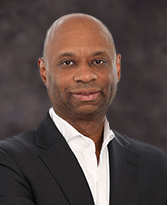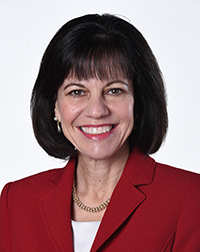
Risk experts say it's a sign of the times.
Companies and other institutions have been finding themselves facing - or being forced to face, depending upon how one looks at it - a ramped up and long overdue reckoning around race.
Nowhere is this more apparent than when it comes to diversity and inclusion - now commonly called D&I, or DEI, as in diversity, equity and inclusion. Typically thought of as being on human resources turf, diversity is increasingly surfacing in C-level conversations and on risk radar screens.
Risk management should “play a key role” because these issues - under the ESG (environmental, social and governance) umbrella - “represent significant strategic and reputational risks that can add or destroy enterprise value,” maintains James Lam, a Boston-area-based risk management consultant who chaired the E*TRADE board's risk committee and served as a chief risk officer with GE Capital Markets Services and Fidelity Investments.
ESG issues have been “bubbling up” for a while and are now a “top concern for corporate boards and leadership teams,” Lam said. He called 2020 a “watershed year,” pointing to a “confluence of ESG crises,” including “the failed U.S. federal response to the pandemic” and the “Black Lives Matter movement.”
Corporate Awakenings
There's no question that COVID-19 has been upending the world as everyone knew it, while disproportionately impacting communities of color and causing companies to put people first in unprecedented ways and come to terms with how they conduct business, both inside and out. Corporate culture is under scrutiny like never before, making systemic racial inequities something companies cannot ignore or simply pay lip service to.

But it was the brutal death of George Floyd in Minneapolis in late May - which went viral after being captured on video - that appears to have been the breaking point. (In a November 60 Minutes interview, former President Barack Obama described it as “heartbreaking.”) The world watched a Black man beg for his life, repeatedly gasping “I can't breathe” while a White police officer kept a knee on his neck. People from all backgrounds took to the streets in mass protests, catapulting the Black Lives Matter movement into the global public eye and consciousness.
Merck & Co. chief executive officer Kenneth Frazier - one of the few Fortune 500 Black CEOs - told CNBC in early June that Floyd “could be me or any other African American man.”
Citigroup chief financial officer Mark Mason posted on the company blog: “Even though I'm the CFO of a global bank, the killings of George Floyd in Minnesota, Ahmaud Arbery in Georgia and Breonna Taylor in Kentucky are reminders of the dangers Black Americans like me face in living our daily lives.”
“Racism continues to be at the root of so much pain and ugliness in our society . . . These systemic problems will not go away until we confront them head on,” Mason wrote.
Financial Commitments
Bank of America in June announced $1 billion of community support over four years to address economic and racial inequality brought on by the pandemic. Also in June, Goldman Sachs created a $10 million Fund for Racial Equity; this in addition to a $30 million COVID-19 relief fund and a $525 million commitment to small businesses, with “significant funds” supporting communities of color.
Citi in late September launched a three-year, $1 billion Action for Racial Equality set of programs aimed at closing the wealth gap. JPMorgan Chase in early October committed $30 billion over five years to advance racial equity, particularly in underserved Black and Latinx communities.
Clifford Rossi, a former CRO for Citigroup's Consumer Lending Division, now consultant with Chesapeake Risk Advisors and professor-of-the-practice and executive-in-residence at the University of Maryland's Robert H. Smith School of Business, reasons that such actions are likely being “driven by current events rather than the proactive and altruistic nature of banks.”
However, he added, “It's the right thing to do, the right moment in time to step up, and it's good for business.”
Setting Standards
In fact, doing the right thing is fast becoming the new corporate currency.
Board diversity is all the buzz these days. Nasdaq, the state of California, BlackRock and Goldman Sachs all have weighed in with representation requirements as a condition of doing business - or in Nasdaq's case, being listed.
The World Economic Forum's International Business Council, chaired by Bank of America CEO Brian Moynihan, in September released a white paper, Measuring Stakeholder Capitalism, with a set of suggested ESG metrics and disclosures, among them diversity, equity and inclusion.
These topics were addressed at a recent RIMS Enterprise Risk Management conference - subjects not exactly thought of as standard risk management fare.
This is “uncharted territory for traditional risk managers,” noted Rossi, who helped organize a December webinar, Diversity and the Bottomline, part of a new series on diversity being produced by the University of Maryland Smith School's Center for Financial Policy.
“Social issues, including diversity, were underrepresented in ESG conversations and initiatives in recent years,” Lam explained. “More attention was focused on the E with climate change and the G with stakeholder management. The COVID-19 pandemic - and the public health, economic, and social crises that it has magnified and contributed to - is changing all of that.”
“Unconscious Bias”
For all the steps forward, though, there have been some glaring missteps; be it backlash in June when JPMorgan Chase CEO Jamie Dimon was pictured taking a knee, seemingly Colin Kaepernick-style, in front of a bank vault; or when Wells Fargo CEO Charles Scharf got slammed in September for a June memo that surfaced - as reported by Reuters - in which he cited “a very limited pool of Black talent to recruit from” as a reason why the bank would have a hard time meeting diversity goals.
Scharf issued an apologetic statement, saying his comments reflected his own “unconscious bias.”
He may not be alone in his thinking. A U.S. House Financial Services Committee majority staff report last February, Diversity and Inclusion: Holding America's Large Banks Accountable, included survey results from 44 banks and savings and loan holding companies with assets of $50 billion or greater. Some respondents cited “the competition for diverse talent” as a big challenge.
The report revealed a lack of diversity on bank boards and among senior management ranks, and limited spending and investments by banks with diverse firms - women- and minority-owned suppliers, vendors and asset managers. It recommended that banks be held accountable and report diversity and inclusion data to regulators and make it available to the public, something they are not currently required to do.

On the Risk Agenda
“I think it is very important that CROs and other risk officers look within their own organizations and address diversity and inclusion issues,” Lam suggested.
He advises that risk managers can support this “by incorporating specific programs and metrics into the company's risk appetite statement and board- and executive-level reporting,” and by incorporating diversity and inclusion “governance, oversight, and management strategies into strategic risk and reputational risk policies.”
Clearly, risk management's role needs to go well beyond box-checking compliance.
Joanne Caruso, executive vice president and chief legal and administrative officer of Jacobs Engineering Group, contends that when tackling these issues, corporate culture is critical. That explains why Jacobs, a 55,000-employee, Dallas-based firm providing consulting, technical, scientific and project delivery services to clients worldwide, identified corporate culture itself as a significant risk to be managed and constantly monitored.
In January 2020, the company created a position - reporting to Caruso - for a senior vice president of ERM to help oversee this effort, which she said is well underway but always evolving.
“A lot of places talk about inclusion and diversity, but it's woven into our company's culture,” Caruso continued. “It's a testament to our CEO and holding people accountable. It can't just be an HR initiative.”
L.A. Winokur is a veteran business journalist based in the San Francisco Bay Area.